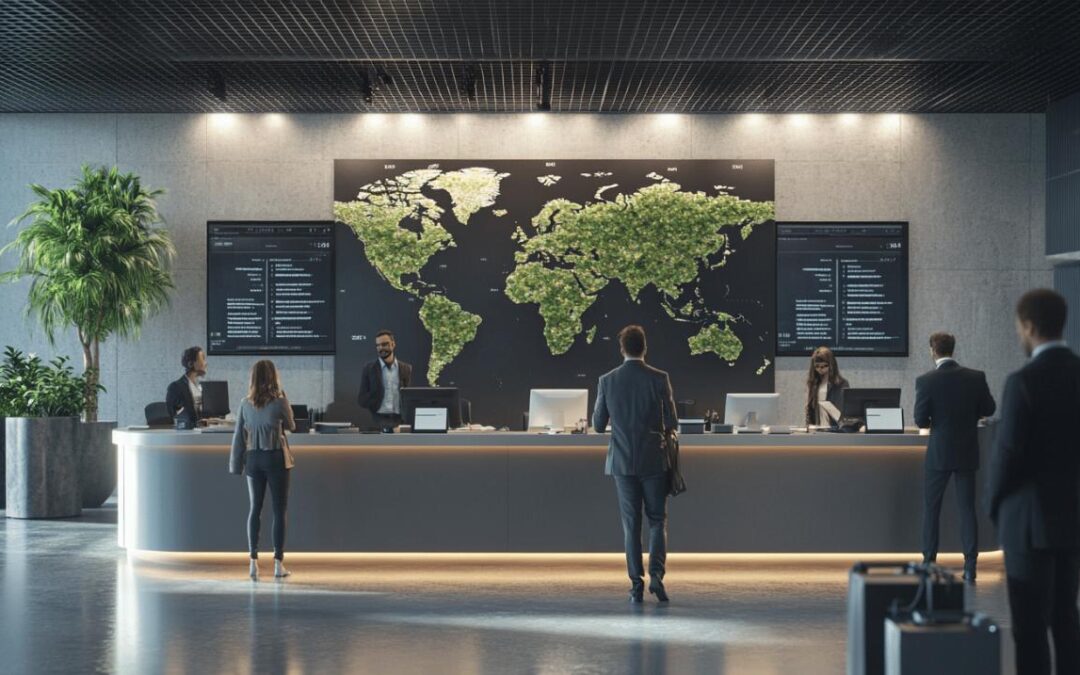Moving abroad brings a multitude of challenges, and one often overlooked aspect is handling your driving credentials in a new country. Whether you're relocating temporarily or permanently, understanding how to exchange your driving licence for a local one can save you significant headaches. This comprehensive guide will walk you through the essential steps to navigate this process smoothly, ensuring you stay legal on the roads of your new home.
Understanding local driving requirements
Before embarking on any licence exchange process, it's crucial to familiarise yourself with the driving regulations in your destination country. According to AutoRegional 22, many expatriates mistakenly assume that their current driving credentials will be automatically valid or that the exchange process will be straightforward across all countries. However, the reality varies significantly depending on where you're relocating.
Researching country-specific motoring laws
Each country maintains its own set of rules regarding foreign driving licences. Some nations allow you to drive with your existing licence for a certain period, while others require immediate exchange upon establishing residency. For instance, within the European Union, you can typically use your valid EU driving licence without exchanging it when moving to another member state. However, this doesn't apply universally, especially if you're moving from outside the EU or if your licence was originally issued by a non-EU country and later exchanged for an EU one.
Determining if license exchange is necessary
Not every relocation requires a licence exchange. If you're staying in a country temporarily, your current credentials might suffice, particularly if supplemented with an International Driving Permit (IDP). However, for permanent residency, most countries mandate an exchange within a specific timeframe, typically between 6 months to 2 years after arrival. Remember that in the EU, you must exchange your licence if it's lost, stolen, or damaged, if you've lived in the country for two years and your licence has no expiry date, or if you commit a traffic offence.
Gathering required documentation
Once you've determined that a licence exchange is necessary, collecting the right documents becomes your next priority. Being thoroughly prepared can significantly expedite the process and help avoid multiple visits to government offices.
Essential personal identification documents
At minimum, you'll need your current valid driving licence, passport or national identity card, and proof of residence in your new country. Some authorities might also request additional identification such as birth certificates or marriage certificates if your name differs across documents. It's worth noting that all documents typically need to be current and valid, with some countries requiring official translations of non-native language documents.
Specific paperwork for driving authorities
Beyond personal identification, driving authorities often require specific documentation related to your driving history. This may include a certificate of entitlement from your previous licensing authority, proof that you've been driving for a minimum period, or a statement confirming your licence is genuine and valid. For some countries, medical certificates attesting to your fitness to drive might also be mandatory, particularly for older drivers or those with certain medical conditions.
Contacting local driving authorities
With your documentation in order, the next step involves reaching out to the appropriate licensing department in your new country to initiate the exchange process.
Finding the appropriate licensing department
The exact authority handling driving licences varies by country. In some nations, it's a centralised national agency, while in others, it might be handled at regional or municipal levels. Government websites typically provide the most accurate information on which department you need to contact. For instance, in the UK, the Driver and Vehicle Licensing Agency (DVLA) handles licence exchanges, whereas in France, you would approach the local prefecture.
Booking appointments and consultations
Many licensing departments operate on an appointment-only basis, especially for foreign licence exchanges which often require special handling. Booking in advance can save considerable waiting time and ensure you speak with the right official who understands the exchange process. During these consultations, officials can clarify any country-specific requirements and guide you through the exact steps needed for your particular situation.
Completing application procedures
With an understanding of the requirements and appropriate contacts established, you'll need to navigate the application process accurately to avoid delays.
Form submission guidelines
Application forms for licence exchange vary widely between countries but generally request personal information, details about your current licence, and your driving history. Complete all sections carefully, ensuring information matches exactly with your supporting documents. Many countries now offer online pre-registration, which can streamline the in-person submission process later. Be prepared to provide biometric data such as fingerprints or a digital signature, and bring recent photographs that meet the specific dimensional requirements of your new country.
Common application mistakes to avoid
Several pitfalls can delay your licence exchange. These include submitting incomplete forms, providing inconsistent information across documents, or failing to include all required supporting materials. Another common mistake is neglecting to verify the authenticity of translations when required. Additionally, some applicants overlook the need to prove legal residency status, which is often a prerequisite for licence exchange in most countries.
Preparing for potential testing requirements
 Depending on your new country and the origin of your current licence, you might need to undergo additional testing to complete the exchange process.
Depending on your new country and the origin of your current licence, you might need to undergo additional testing to complete the exchange process.
Theory test preparation strategies
Some countries require foreign drivers to pass a theory test, even with a valid licence from elsewhere. These tests typically cover local traffic laws, road signs, and driving regulations specific to your new country. Study materials are often available from the licensing authority, though they may only be provided in the local language. Consider investing in translated study guides or apps designed for expatriates preparing for such tests. Practice tests available online can also help familiarise you with the format and types of questions to expect.
Practical driving assessment tips
A practical driving test might be mandatory if your original licence was issued by a country without a reciprocal agreement with your new home. These assessments evaluate your ability to drive safely while adhering to local road conventions. Consider taking a few lessons with a local driving instructor before the test to become familiar with specific requirements and potential testing routes. Pay particular attention to any driving customs that differ from your home country, such as roundabout procedures or priority rules.
Managing fees and financial aspects
The licence exchange process typically involves various costs that should be factored into your planning.
Standard costs associated with license exchange
Fees for licence exchange vary significantly between countries but generally include administrative processing fees, testing fees if applicable, and charges for the physical licence issuance. Additional costs might include translation services for documents, medical examination fees, and potentially consultation fees if you require assistance from specialised agencies. For reference, an International Driving Permit in the UK costs £5.50, but the full exchange process in most countries will be considerably more expensive.
Payment methods and processing times
Most authorities accept various payment methods including credit cards, bank transfers, or cash payments directly at their offices. The processing time for licence exchanges can range from immediate issuance to several months depending on the country and complexity of your application. Some countries offer expedited processing for an additional fee, which might be worth considering if you need your new licence urgently for employment or other pressing reasons.
Finalising the exchange process
As you approach the final stages of the exchange, you'll need to complete a few more steps to receive your new licence.
Surrendering your previous license
Most countries require you to surrender your original driving licence when issuing a new one, as international regulations typically prohibit holding multiple full licences simultaneously. This is particularly true within the EU, where you can only hold one EU driving licence at a time. The surrendered licence is usually returned to the issuing authority in your home country. In some cases, you might receive a receipt or temporary permit to use while waiting for your new licence to be processed.
Receiving and validating your new license
Once approved, you'll receive your new driving licence either in person or by mail, depending on the country's procedures. Upon receipt, carefully check all details for accuracy, including personal information, licence categories, and any restrictions or conditions. If you notice any errors, contact the issuing authority immediately for corrections. Some countries issue temporary licences first, followed by permanent ones after a probationary period.
Post-exchange requirements
Obtaining your new licence is not the final step; there are several important actions to take after the exchange is complete.
Updating vehicle insurance coverage
With a new licence, you need to inform your vehicle insurance provider about the change. This ensures your policy remains valid and properly reflects your current driving credentials. Failure to update this information could potentially invalidate your insurance coverage in the event of an accident. Additionally, check whether your insurance covers all the countries you might drive through if you plan on cross-border travel.
Vehicle registration compliance
If you've imported a vehicle from your previous country, you'll likely need to register it locally once you've obtained your new driving licence. This process typically involves vehicle inspections, payment of import duties or taxes, and obtaining local number plates. Depending on your vehicle's specifications, modifications might be required to meet local safety or emissions standards. Additionally, you may need to display certain items in your vehicle, such as reflective jackets or warning triangles, which are mandatory in many countries.

